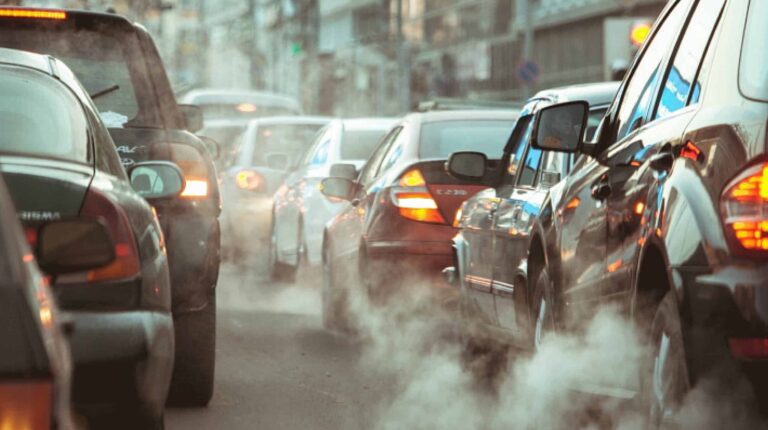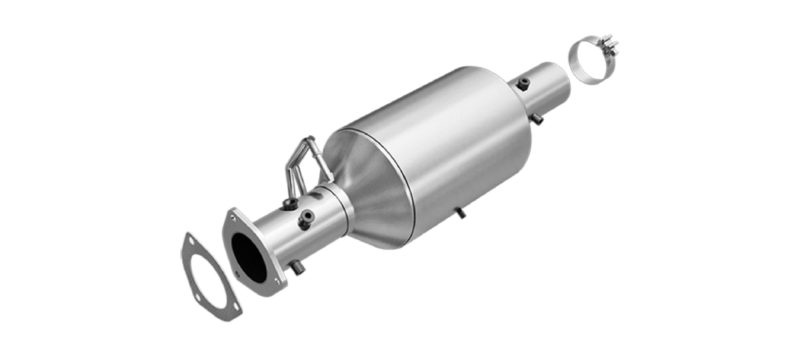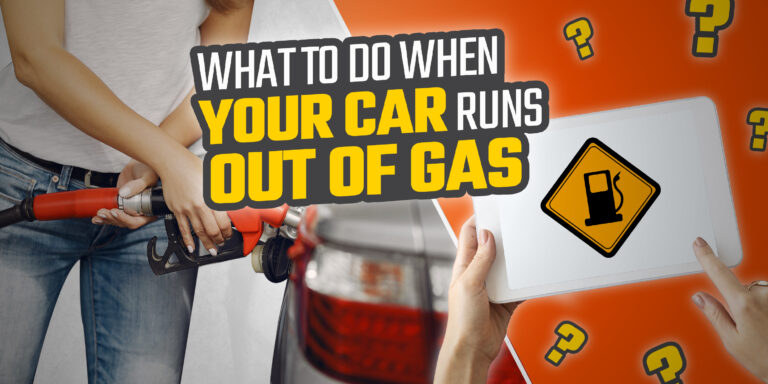
Do you remember the time when the nation was under lockdown for three months? Roads were blocked, cars were parked in garages, industries were shut. Within one month of lockdown, the AQI levels dropped drastically, the trees became greener, the rivers got cleaner and it was a special kind of experience. We could live in such a clean environment if we minimise the sources of emissions and harmful pollutants. One such source of harmful emissions is our cars and emission control systems are engineered to minimise the effect. Today, we will tell you what an emission control system is, how it works and explain its different types.
What is an Emission Control System?
The emission control system includes a series of functions that the vehicle performs to keep the emissions as low as possible. Harmful emissions like carbon monoxide (CO), hydrocarbons (HC) and nitrogen oxide (NOx) are minimised with the help of an emission control system. We can generally classify the emission control methods into two categories, prevention/active and destruction/passive. Automotive engines have become a lot more advanced and the new technologies have reduced the emission output. Some small improvements like using the correct air/fuel ratio, enhanced combustion techniques, and variable fuel ratio are some of the advancements. However, we explain more impactful and necessary emission control methods that are needed to comply with new stringent emission norms.
Catalytic Converters
Catalytic Converter is popular equipment used in all vehicles to destruct tailpipe emissions. Even though catalytic converters have been used since 1970, there have been multiple advancements in the working of catalytic converters. The two-way catalytic converter could only control CO and HC only whereas the three-way setup also controls oxides of Nitrogen (NOx) and is hence used in all modern cars. Modern catalytic converters convert harmful gases and pollutants into carbon dioxide (CO2) and water (H2o). The catalytic converter is a cylindrical canister that is mounted on the exhaust pipe. It holds some precious metals like platinum (Pt), Palladium (Pd) and Rhodium (Rh) that perform oxidation and convert the harmful gases into CO2 and water.
The catalytic converter works under the effect of heat and lack of heat can degrade the overall efficiency. Hence, when the engine is cold, the catalytic converter can not work to its optimum efficiency, and to control emissions, many carmakers are now using a secondary battery to pre-heat the catalytic converter as soon as you start your vehicle. The catalytic converter is the most important emission control device that destructs harmful emissions.

Evaporative Emission Control
Evaporative emission control not only helps to reduce the emissions but also saves fuel and increases the overall efficiency of the vehicles. In technical terms, an evaporative emission control system eliminates the evaporation of hydrocarbons from the fuel tank and circulates them into the combustion chamber. The key mechanical component of this emission control system is the carbon canister that stores the hydrocarbons. The carbon canister absorbs the fuel vapours via loose chemical bonds and releases them via the purge solenoid that is controlled via the onboard computer module.
The fuel vapours are flammable and channelled into the combustion chamber for combustion. It saves fuel and also controls the emissions as the vapours evaporate through the fuel tank lid when opened for refuelling. The vapours are injected into the intake manifold of the engine via the PCV valve.
Exhaust Gas Recirculation (EGR)
Exhaust Gas Recirculation is very useful in lowering emissions and keeping the engine temperatures low as possible. EGR is mostly available with turbocharged petrol and diesel engines and petrol engines adopted this technology much earlier than diesel engines. Talking about the construction, the exhaust manifold channels some of the exhaust gases into the intake manifold and that helps to decrease the engine temperature and overall emissions. EGR is used in diesel engines to reduce NOx emissions whereas it comes in handy to increase efficiency in petrol engines.
Exhaust gases are already hot so you must be thinking about how something hot can decrease the temperature? Well, the exhaust gases are inert gases that mean they are already burnt. Hence, they decrease the combustion capacity of each of the cylinders and that decreases the heat produced and less heat means lower emissions. It is worth noting that EGR reduces the power to some extent and this system doesn’t work when absolute power is demanded. If the engine is not running hot, EGR also doesn’t work until the engine touches its optimum operating temperature.

Diesel Particulate Filter (DPF)
Diesel Particulate Filter (DPF) is a honeycomb filter that traps the soot post-combustion from the exhaust manifold. It traps all the solid particles and collects them to a certain capacity post which the substances are burnt. The burning of soot is called regeneration and it happens when the car is driving in a controlled environment at certain engine RPMs.
Driving the car at slow speeds can hamper the regeneration process and thus, car manufacturers recommend a regeneration cycle that should be followed to maximise the engine’s health. The regeneration process needs a certain temperature of the exhaust and a high level of oxygen. Modern cars inform the driver of the activity levels of DPF clogging and the regeneration process is done seamlessly.

Selective Catalyst Reduction (SCR)
Selective Catalyst Reduction (SCR) is also an advanced emission control method that is mostly used in higher-capacity diesel engines. SCR technology which is also known as Adblue has become important for high-capacity diesel engines to comply with stringent BS6 norms. Adblue is a form of liquid urea and is often called Diesel Exhaust Fluid (DEF). SCR works in conjunction with the DPF and the Adblue fluid is sprayed into the exhaust. The fluid reacts with NOx and converts it into nitrogen, water and CO2. The converted gases are far less harmful when compared to NOx and go out from the exhaust pipe. SCR system can reduce NOx emissions by up to 90% and helps to comply with stringent BS6 norms.

Frequently Asked Question
The emission control system is a very vast topic and here are some of the most common FAQs regarding the system:
Q1: Does catalytic converter affect emissions?
Ans. Catalytic converter acts as the main emission control unit in a vehicle and it traps the most harmful gases and converts them into nitrogen, water and carbon dioxide. A vehicle without a catalytic converter would emit a lot more emissions and will be harmful to the environment.
Q2: How does the emission control system work?
Ans. The emission control system works in a series and in conjunction with a lot of systems. We can mainly categorise the system into two types, preventive and destructive. The main aim of the emission control system is to reduce the level of emissions without compromising on the efficiency and performance of the vehicle.
Q3: Fault with emission control system
Ans. The emission control system includes a lot of complexities and modern cars are equipped with computers that inform the driver about any fault. The most common fault in the new car’s emission control system is the clogging of DPF that is shown on the instrument cluster of the vehicle. If such a popup is shown up, you can either use the regeneration process or take the car to the mechanic.
Q4: How to fix emission control system?
Ans. The emission control system includes a lot of complexities and the parts of the system are hidden deep inside the bonnet or underneath the car. Hence, if you face any issues, it’s always recommended to get your checked via an experienced mechanic.
Q5: When the emission control system is not ready?
Ans. Most emission control systems need optimum temperature and a high density of oxygen to perform the emission control. Parts like the catalytic converter and EGR doesn’t work when the engine temperature is low. Hence, carmakers also do the aftermath and tune these systems to work in every environment.
If you found this article helpful, make sure to read other informative blogs on the Carorbis Blog and also read Upcoming Tesla Cars in India – Expected Price Range








